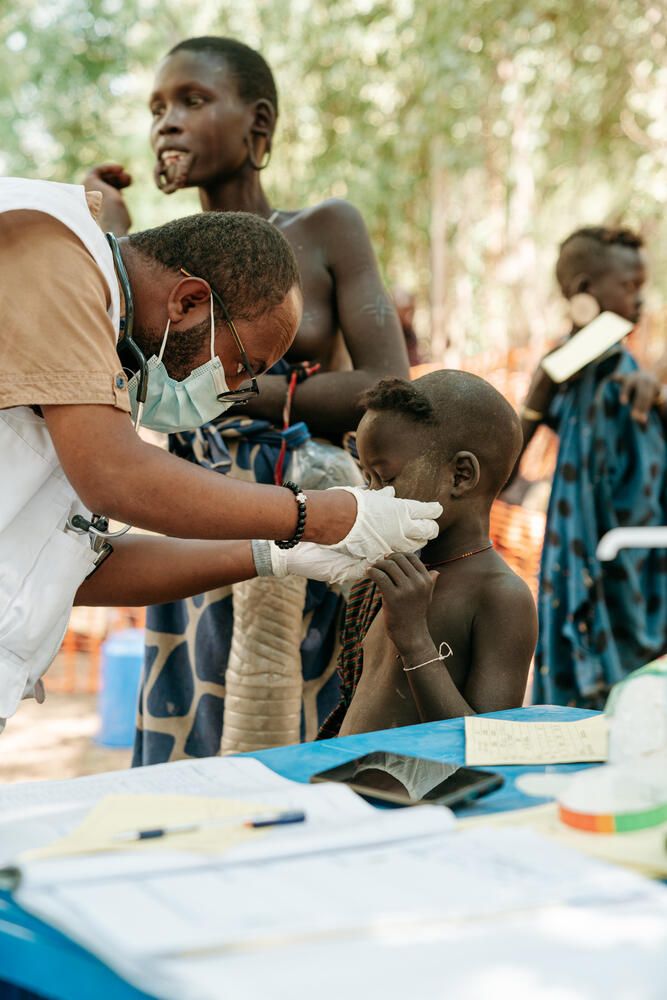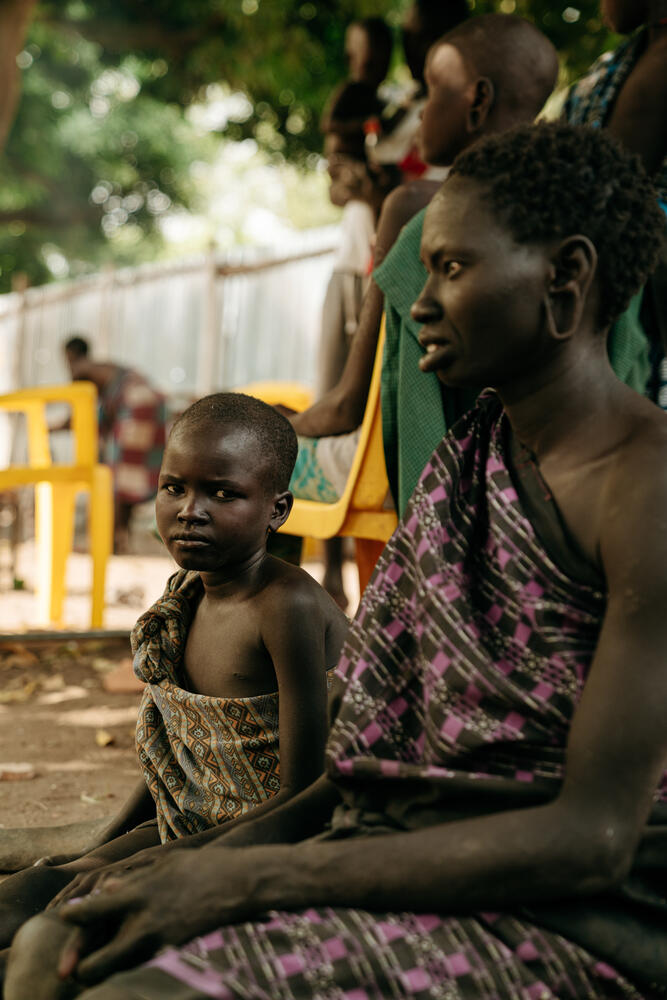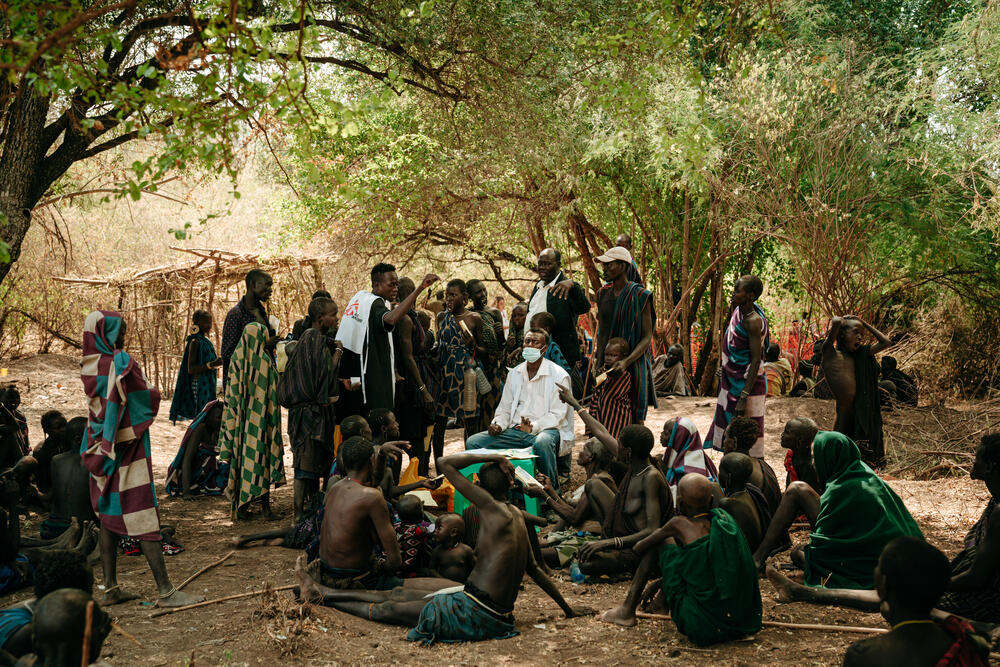Kala azar: “We don’t know where it comes from, but it kills a lot of people”
In late 2022, a Médecins Sans Frontières / Doctors Without Borders (MSF) team working in Ethiopia received an alert.
There was an unusually high number of deaths in the South Omo Valley, affecting an isolated group of people from the Mursi tribe living in what is now a national park.
The Mursi are a small tribe of approximately 7,000 people among more than a dozen isolated indigenous groups in Ethiopia’s Lower Omo Valley. They are largely pastoralists, hunter-gatherers, or floodplain farmers.
After an emergency assessment, it was found that visceral leishmaniasis – a deadly parasitic infection also known as kala azar – was affecting people in the area.
After receiving the initial alert, an MSF team travelled to the South Omo Valley.
What they found was shocking: an alarmingly high number of kala azar cases among a relatively small community, with no access to healthcare at all.
The MSF assessment team also found a high number of children and adults suffering from severe acute malnutrition caused by the kala azar infection.
“Patients come with a huge swelling of their spleen and liver, with fever and also malnutrition and sometimes even bleeding because their bone marrow is affected,” says MSF doctor Hewot Melak.
“[Kala azar] is also among the neglected tropical diseases that can cause a 95 percent fatality rate if not treated. So, you can understand the urgency of finding these cases and putting them on treatment.”
Since launching the response to this acutely neglected emergency, MSF teams have actively identified and treated 79 patients with the infection.
Life-saving kala azar care, thanks to your support
The generosity of people like you means expert MSF medical teams can treat neglected tropical diseases across the world.
Kala azar is not only one of the most neglected tropical diseases but also one of the deadliest. It is almost always fatal if untreated.
“We don’t know where it comes from, but it kills a lot of people,” community member Bicolshe later told MSF.
Another patient, an elderly man named Samakaoulu Kumuhuli Data, shared that he had lost two wives and five children because of the disease.
After first being documented in 1942, the disease has spread to become endemic in many parts of Ethiopia. More than 3.2 million people across the country are now at risk.
Seventy years without healthcare
As soon as the cause was identified, our teams began preparing an emergency response.
Mobile clinics started visiting the community to actively find kala azar cases and provide urgently needed essential health services. For many people, it was the first time they had been seen by a doctor or nurse, and most had never been vaccinated.
“This is [an] important thing because these people haven't had any medical service previously,” explained Tamirat Bantule, an MSF doctor.
“This is the first time most of them – some people even as old as 60 or 70 years. It's their first time for a clinic visit.
“We have also found several malaria cases and a lot of cases with nutritional anaemia. We are going to refer them back to the hospital.”
When a patient is identified with kala azar, they are referred to Jinka Hospital about 30 miles away.
Within a few weeks, the capacity of the hospital to treat kala azar was overwhelmed and MSF teams, alongside staff from the Ministry of Health, set up tents to provide additional space. Eventually, it was decided to run a dedicated kala azar ward within the hospital.
Despite the complex and painful diagnosis and treatment of the disease, almost all patients treated so far have recovered.
“I decided to take my son to the mobile clinic. The doctors referred us to the hospital here. He got treated,” said Bicolshe, whose son was treated for kala azar.
“At first, I thought he would die, but he made it.”
Malnutrition and other concerns
With a severe drought now affecting large parts of Ethiopia for several years, kala azar is not the only life-threatening risk faced by the many indigenous groups struggling to survive in the South Omo Valley.
“People still alive will die because of hunger,” warned Samakaoulu Kumuhuli Data during his mobile clinic visit.
“There is nothing to eat. Only the wild leaves to eat. This is what makes us worried.”
As well as kala azar and chronic hunger, MSF is also concerned about possible measles and cholera outbreaks in a community that has missed out on routine vaccinations.
MSF teams have now extended active case finding and essential mobile clinics to various parts of the South Omo Valley while continuing to increase the capacity to diagnose and treat kala azar patients at Jinka hospital.
A call for accountability
MSF continues to remember our colleagues killed in Ethiopia on 24 June 2021.
María Hernández Matas, Tedros Gebremariam Gebremichael and Yohannes Halefom Reda were brutally and intentionally killed while clearly identified as humanitarian workers in Tigray.
However, after extensive engagement with the Ethiopian authorities, we still do not have any credible answers on what happened to our colleagues that day.
MSF will keep pursuing accountability for this incident by using all possible means and avenues, with the hope this shall also contribute to improving the safety of humanitarian workers in Ethiopia.
MSF and kala azar
Kala azar is one of the most dangerous neglected tropical diseases (NTDs), fatal in 95% of cases if left untreated.
Also known as visceral leishmaniasis, kala azar is the most serious form of leishmaniasis and as of 2020 is endemic in 90 countries.


